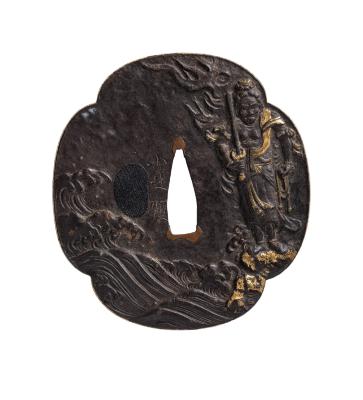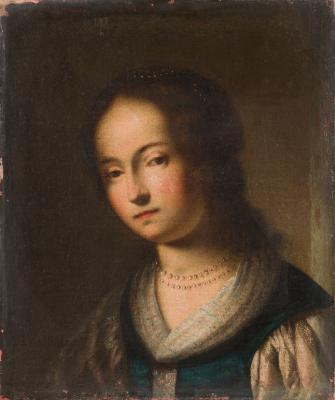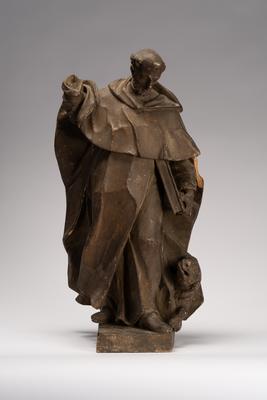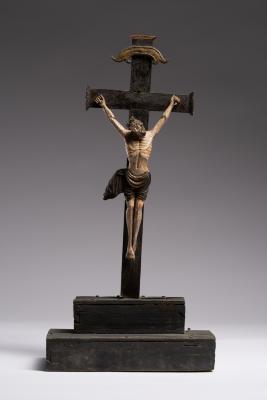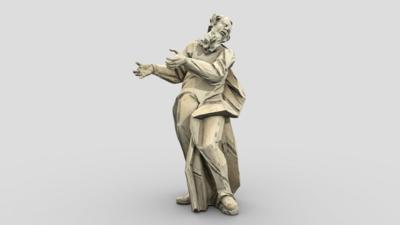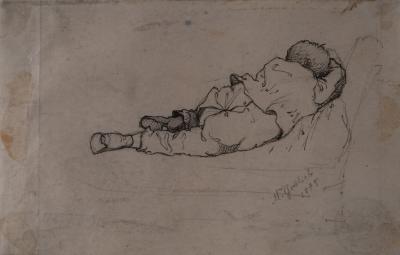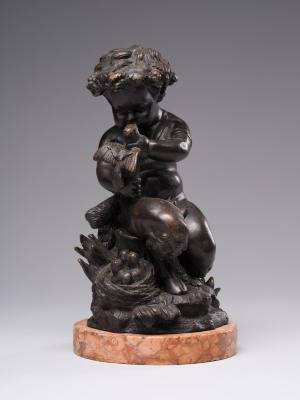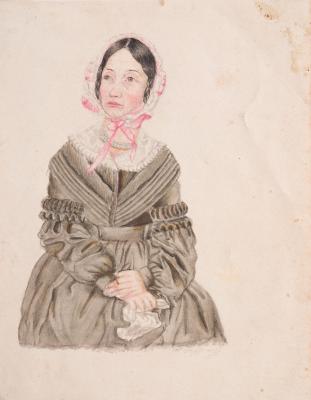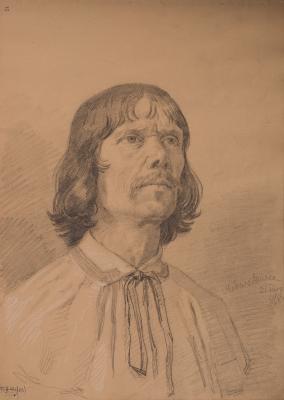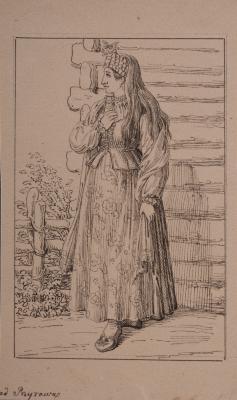The work is from the Roman series. The first version of the composition is known from the album Costumi di Tivoli, published in 1815 and reissued in 1816 in the album Nuova Raccolta di Cinquanta Costumi Pittoreschi incisi all 'acquaforte da Bartolomeo Pinelli Romano, Nicola de Antoni impresse, Ignazio Pavon Offre e Dedica Roma, Roma 1816. A version similar to the Lviv one was released in the album Nuova Raccolta di Cinquanta Costumi Pittoreschi (New Collection of Fifty Picturesque Costumes), published by Giovanni Scudellari in Rome in 1817. The second version was almost the same as the first one. In the centre of the foreground, one can see a young man and a girl who met near the house's entrance. He behaves like a sophisticated gentleman. The man is wearing a tilted hat and a jacket over his shoulder. He is standing with one foot placed on the stairs. The young beauty is looking at him, standing at the entrance and raising her finger. She might be warning him or arranging something with him. She is dressed in a white shirt, blue apron, and long pink skirt. An old blind woman is depicted in the doorway to the girl's left. She is shown sitting on a wooden chair and spinning something on a spindle. In the background on the right is another old house with an arched doorway, above which one can see a mountain top. The characters' clothes are painted with bright watercolours, namely red, blue, yellow, and pink tones. The architecture is depicted in blurred grey and blue, ocher, and pink colours.
Tivoli is a city in the Lazio region northwest of Rome. It was built up during the Renaissance thanks to popes and cardinals.





